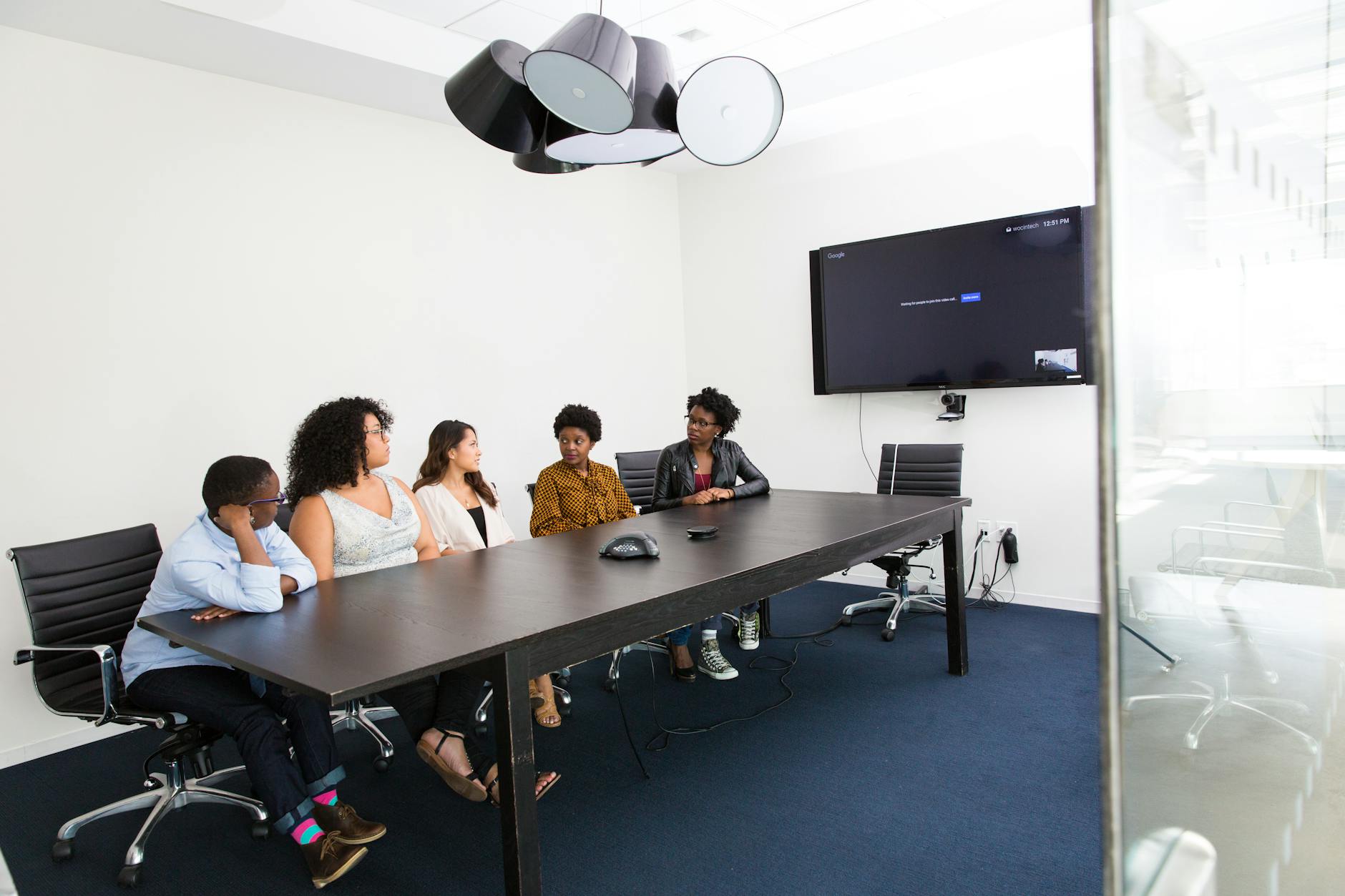Are You Ready for the Future of Education with Technology in Australia?

Embracing Technology in Classrooms
In the heart of Melbourne, teachers like me are stepping into a new era of teaching, inspired by places like the Melbourne Museum's Science and Life Gallery. We are witnessing how technology can transform educational environments. Loudspeakers and other smart technology can create a more inclusive and engaging classroom experience. By integrating tools like universal remote controls, educators can easily manage various devices, allowing for seamless transitions between different teaching aids without interrupting the flow of the lesson.
Next is the innovative application of PTZ cameras. These allow educators to deliver a more personalised experience by focusing on specific areas of interest within the classroom, similar to the interactive demonstrations at Scienceworks. By leveraging these technologies, we are able to capture students' attention more effectively, making the lessons as captivating as possible.
Here are some technology tips to consider:
- Utilise loudspeakers to amplify lessons for better auditory access.
- Use universal remotes to switch between devices easily.
- Implement PTZ cameras to focus on student activities or group discussions.
Integrating these technologies aligns with the dynamic spirit of academic technology talks at the University of Melbourne, fueling our drive to modernise education consistently. This melding of technology with traditional teaching methods is pivotal in shaping classrooms that cater to diverse learning needs and keeping students engaged and inspired.
Benefits for Diverse Learners
Enhancing Learning for Special Needs
In modern classrooms, technology is crucial for creating inclusive learning environments, especially for students with special needs. As an advocate for education modernization, I've found that integrating tools like a hearing loop can significantly enhance auditory learning for students who are hearing-impaired. Imagine sitting in an interactive demonstration at Melbourne Museum's Science and Life Gallery, where these technologies bring exhibits to life by letting every learner engage fully and feel included.
Increasing Student Engagement
Classroom tools such as data projectors enable teachers to display vibrant visuals, which can captivate students’ attention and make learning more engaging. Think about the absorbing exhibits at the Scienceworks museum, and how these visual elements engage visitors of all ages. Similarly, projecting dynamic content in a classroom can spark student curiosity and inspire active participation.
Supporting Different Learning Styles
Different students have varied learning preferences, and today’s educational tools cater to these diverse needs. For instance, AV cables play a role in connecting various devices to present audio-visual content, supporting auditory, visual, and kinesthetic learners efficiently. Devices configured with appropriate technology help bridge the gap in delivering tailored educational content. Consider the academic technology talks at the University of Melbourne, where using such resources informs attendees of these multidimensional teaching aids.
Incorporating cutting-edge technology not only inspires educators but also ignites students’ desire to learn, transforming the educational experience into a dynamic exploration.
Overcoming Technology Challenges
Addressing Compatibility Issues
As classrooms evolve, ensuring seamless integration of new technology can be challenging. One common issue is the compatibility between existing systems and newer tech. While the idea of installing a motorised projector screen might excite many educators like Claire, it’s crucial to confirm its compatibility with current projectors or computers. When these systems don't align, it can lead to disruptions that hinder learning rather than support it.
Maximizing Limited Resources
Budget constraints are a reality for many educational institutions, necessitating strategic planning to make the most of available resources. Creative thinking can bridge the gap; for instance, using acoustic panels not only enhances sound quality but doubles as a tool for visual learning and engaging wall art. By choosing multifunctional equipment, you maximise the impact of your investment, much like expertly curated exhibits at the Scienceworks Museum in Melbourne inspire both the imagination and intellect.
Navigating Technical Difficulties
Anyone who's faced an unexpected technical glitch mid-lesson knows the importance of swift troubleshooting. Developing a basic understanding of common tech issues can alleviate stress and minimise downtime. Regularly attending academic technology talks at the University of Melbourne, for example, can provide valuable insights and empower teachers like Claire with practical skills and confidence. Embracing these strategies ensures that technology serves as a stepping stone, not a stumbling block, in classroom advancement, ultimately enhancing the learning experience for all students.
Strategies for Effective Implementation
Training and Professional Development
Incorporating technology in the classroom requires a foundation of robust training and professional development. Engaging in hands-on workshops and attending relevant seminars equips educators with the skills to proficiently use smart classroom equipment. By participating actively in academic technology talks at the University of Melbourne, teachers can gain insights into integrating tools like the recording microphone and engaging home entertainment systems effectively into their lessons. These opportunities not only boost teacher confidence but also ensure technology is leveraged to its fullest potential.
Creating Inclusive Lesson Plans
Crafting lesson plans with inclusivity in mind ensures all students, including those with special needs, have equal learning opportunities. By integrating adaptive technologies and accessible formats, educators can cater to different learning abilities. For instance, using a recording microphone can help capture lectures for later review, providing a resource for students who benefit from repeated exposure to class material. Planning activities that incorporate visual displays and audiobooks can further engage diverse learners, making classroom content more accessible and understandable.
Fostering a Collaborative Environment
A collaborative classroom environment encourages both dialogue and peer learning, which can enhance the educational experience for students. Technology plays a vital role here. For instance, using digital platforms for group projects allows students to share ideas and resources seamlessly. Encouraging students to participate in tech-driven activities, like creating multimedia presentations or virtual field trips, enhances cooperation and critical thinking skills. This approach mirrors the interactive elements found in exhibits at the Scienceworks museum, promoting active participation and fostering a sense of community in the classroom.
Mistakes to Avoid in Smart Classroom Implementation
Overlooking Student Feedback
One pitfall to steer clear of is ignoring the incredibly valuable input from students. By actively incorporating student feedback, you can create an interactive environment akin to the engaging exhibits at the Scienceworks museum. This participatory approach not only tailors the learning experience but also boosts student ownership and investment in their education. For example, when using smart classroom equipment, gather opinions on its usability and effectiveness to make informed adjustments that meet their unique needs.
Neglecting Routine Maintenance
Skipping regular maintenance on classroom technology can lead to disruptions as chaotic as a sudden blackout at a critical moment during an academic technology talk at the University of Melbourne. To prevent such setbacks, establish a routine check-up schedule. Ensure all devices, from interactive whiteboards to data projectors, are in prime condition. Not only does this prolong the equipment's lifespan, but it also guarantees seamless technology integration, which can significantly enhance the learning experience.
Minimising the Importance of Training
Lastly, underestimating training needs can compromise the effective use of technology in classrooms. Picture a scenario where educators are navigating new tech tools like visitors exploring the Melbourne Museum's Science and Life Gallery without a guide—overwhelming and counterproductive. It’s vital to invest in comprehensive training sessions and professional development opportunities. This ensures educators are well equipped to harness technology, enhancing student engagement and supporting diverse learning styles.
By weaving these technology tips into the educational fabric, we can modernize teaching methods and inspire both educators and learners.


